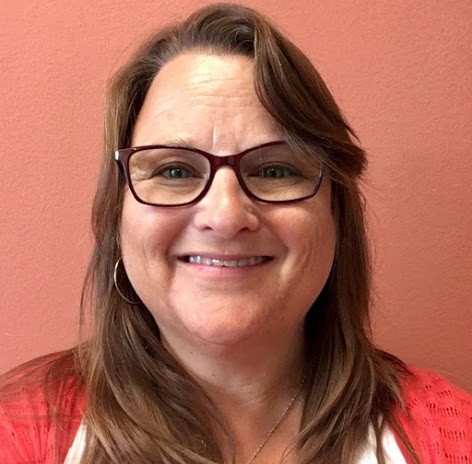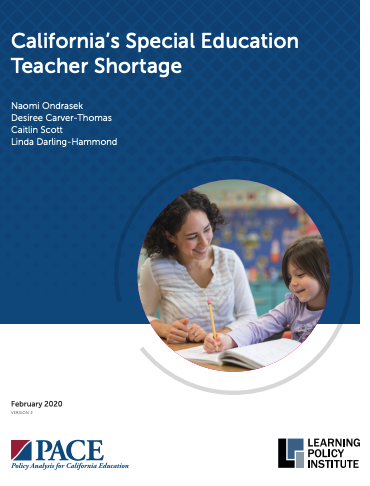Special Education, the Pandemic, and the Ombudsperson

Solving problems before they blow up
The Pandemic has been hard on all of us — particularly those whose children need special education services. Many parents understood the predicament schools faced, trying to provide services through distance learning with restrictions on in person contact. They gave schools some leeway. But now that school has reopened, they expect appropriate and timely services for their children.
Anticipating an onslaught of special education complaints for failing to provide services, the California state budget set aside $100 million to help resolve special education disputes through the Alternative Dispute Resolution process (ADR). This additional money must be used to prevent and resolve special education disputes stemming from the COVID-19 pandemic. Funds will be allocated on a per pupil basis based on pupils with exceptional needs, ages 3 through 22.
The idea is to resolve these issues locally before they blow up and result in formal complaints to the state and combative, costly lawsuits. There are many dispute resolution options of varying complexity and expense, from prevention to legal action.
The state budget also includes $450 million for learning recovery support for students with disabilities. This money can be used for extra tutoring, therapy, and other services to make up for what students missed during the pandemic.
Even in a pandemic special education services are required
Under state and federal law, school districts are required to provide services to children with special needs — even in a pandemic. A child’s individualized education program (IEP) lists those services. For example, a student may need help with speech twice a week or lessons adapted to special needs. Children with disabilities are entitled to a free appropriate public education (FAPE) and infants and toddlers are entitled to services.
Teacher shortages — no easy answers
Bet you’ve heard of the teacher shortage. In special education, this is especially acute. School districts want to provide the extra help but in too many cases, there are not enough special education specialists to do the job. Just check out EdJoin to see a sample list of school job openings.
Let’s say a student did not receive speech support when school was closed. Now school is open and parents want to make up for the lost sessions. Because so many other students also lost instructional support, there are not enough speech specialists.
Another example: parents ask for an evaluation to determine eligibility for special education. Because there are so many requests — triggered by loss of learning during the pandemic — evaluations can’t be scheduled in a timely manner. There is a shortage of specialists who can perform these evaluations. School districts want to hire but no one is available.
How should these be resolved?
Add “ombudsperson” to your special education vocabulary
Special education is filled with acronyms and words you may not know. We’ve already highlighted ADR, IEP and FAPE. Here is one more that’s particularly important for schools right now: ombudsperson. An ombudsperson helps parents navigate the confusing special education system through communication, outreach and dispute resolution. The ombudsperson is the first person to call when parents need additional help beyond their own school site.
Most school districts do not yet have an ombudsperson. They should.
Most school districts do not yet have this position, but the San Francisco Unified school district (SFUSD) was an early adopter. Julia Martin, the SFUSD ombudsperson, had a unique view of the world of special education during the pandemic:
“Prior to the pandemic, families contacted me when they were frustrated or upset with special education services. During the pandemic, families called with critical emergency covid concerns. Phone calls and emails increased dramatically as the needs of students and families increased.
“Caring for a child with complex disabilities at home during distance learning was extremely challenging. Families were struggling to get access to critical services or dealing with the loss of loved ones, or facing food or housing insecurities. Others needed support for a child in crisis who spent days in the fetal position or had tried to commit suicide. With so many needs and limited resources, it was a challenge to provide enough support for each child.”
Advocating for families
The Ombudsperson worked with the school district to initiate and provide additional support for students, families and staff.
|
Special education COVID services facilitated by the ombudsperson |
|
|---|---|
|
Emergency plans |
Each student with an IEP got an Emergency Learning Plan to address unique needs. The ombudsperson advised families about what to expect in these new plans and addressed concerns, challenges and questions about services during distance learning. |
|
Community coordination |
Collaborated with the Regional Center to ensure access to resources outside the school district, including respite services, personal assistance and even childcare. Helped families register as In Home Supportive Services workers (IHSS) to allow family caregivers to get a small stipend to provide care for family members with a disability and priority for vaccinations. |
|
Meal delivery |
Some students and families were homebound and unable to stand in line at food distribution sites. A generous private grant enabled the student nutrition department, ombudsperson and others to create a school meal home delivery service for disabled students |
|
Homeless students, group homes, SROs |
Through community outreach the ombudsperson worked to inform caregivers and community groups of special education and district resources. For example, making sure students had access to services via an emergency learning plan, a working device, or access to a quiet place to participate in zoom classes. |
|
Call center |
Many families, especially English Learners, didn’t know where to go for help. Parents without computers showed up at school sites and knocked on doors to drop off paperwork. No one was there. The district created a Student and Family Resource Link, a call center where families with and without computer access could call for help. The ombudsperson responded to the many special education parent questions and concerns. |
|
Support for educators |
The ombudsperson collaborated with many departments within SFUSD to ensure accessibility for students with disabilities. For example, Zoom lessons and meetings had to be accessible for individuals with hearing impairments. Mask guidelines, PPE and covid protocols had to be set up so that students with disabilities were safe and that policies did not adversely affect them. |
New funding: a silver lining
Julia calls the new funding for dispute resolutions a silver lining. “This can fundamentally change the dynamics of special education. It has the potential to move special education from an adversarial situation — where a parent has to demand and fight for compensatory education — to an opportunity for schools to initiate the discussion about compensation. Families and schools can come up with a resolution that will best serve the student.”
“This can fundamentally change the dynamics of special education.”
Julia feels this is an opportunity to get away from a cycle that perpetuates inequalities — “where only those with means can afford to hire attorneys to fight for their students.” The California Department of Education has made clear that this funding cannot be used to pay for lawyers. Districts are encouraged to find ways to resolve disputes locally in the most equitable way possible, not just for the squeaky wheel.
“Before the pandemic, families who missed speech therapy or had a dispute with their IEP team about the services had a painful and often lonely road to go about requesting compensation for those losses,” Julia reports. “Conversations with teachers and principals and school staff tended to put folks on the defensive and quickly turned negative and in many cases toxic.”
In San Francisco, the additional ADR funding will strengthen the district’s access to neutral mediators from the SF Bar Association as well as with Support for Families with Disabilities. Other family centers throughout the state also support parents of children with disabilities.
|
Ideas about how school districts can use ADR funds (Source: SFUSD) |
|---|
|
Create special education resource materials in multiple languages to educate and support monolingual families. |
|
Create training modules for staff on special education, equity, mediation and restorative practices. |
|
Provide social emotional and wellness support for students and families. |
|
More opportunities for facilitated IEPs. |
|
Post-ADR or IEP strategy meeting with a facilitator or parent mentor. |
|
Parent education events including IEP training, conferences, classes, resource fairs. |
|
Referrals to outside agencies for information and collaborative support. |
|
Use Mediation to reach agreement. |
What is your school district doing?
Now that you know how an ombudsperson can help parents understand special education and facilitate district-wide change, is this something your school district should fund? Let us know what you think. How is your school district using this new funding? Add ideas to the comment section below.
Disclosure:
 Julia Martin is the Special Education Ombudsperson for San Francisco Unified School District. The parent of an SFUSD graduate with a disability, she has been supporting families of students with disabilities in San Francisco and the Bay Area for over a decade. She is a previous chair of the Community Advisory Committee for Special Education and founded several inclusive parent groups at her children’s schools and in the community. Carol Kocivar also served this role.
Julia Martin is the Special Education Ombudsperson for San Francisco Unified School District. The parent of an SFUSD graduate with a disability, she has been supporting families of students with disabilities in San Francisco and the Bay Area for over a decade. She is a previous chair of the Community Advisory Committee for Special Education and founded several inclusive parent groups at her children’s schools and in the community. Carol Kocivar also served this role.Tags on this post
Special edAll Tags
A-G requirements Absences Accountability Accreditation Achievement gap Administrators After school Algebra API Arts Assessment At-risk students Attendance Beacon links Bilingual education Bonds Brain Brown Act Budgets Bullying Burbank Business Career Carol Dweck Categorical funds Catholic schools Certification CHAMP Change Character Education Chart Charter schools Civics Class size CMOs Collective bargaining College Common core Community schools Contest Continuous Improvement Cost of education Counselors Creativity Crossword CSBA CTA Dashboard Data Dialogue District boundaries Districts Diversity Drawing DREAM Act Dyslexia EACH Early childhood Economic growth EdPrezi EdSource EdTech Education foundations Effort Election English learners Equity ESSA Ethnic studies Ethnic studies Evaluation rubric Expanded Learning Facilities Fake News Federal Federal policy Funding Gifted Graduation rates Grit Health Help Wanted History Home schools Homeless students Homework Hours of opportunity Humanities Independence Day Indignation Infrastructure Initiatives International Jargon Khan Academy Kindergarten LCAP LCFF Leaderboard Leadership Learning Litigation Lobbyists Local control Local funding Local governance Lottery Magnet schools Map Math Media Mental Health Mindfulness Mindset Myth Myths NAEP National comparisons NCLB Nutrition Pandemic Parcel taxes Parent Engagement Parent Leader Guide Parents peanut butter Pedagogy Pensions personalized Philanthropy PISA Planning Policy Politics population Poverty Preschool Prezi Private schools Prize Project-based learning Prop 13 Prop 98 Property taxes PTA Purpose of education puzzle Quality Race Rating Schools Reading Recruiting teachers Reform Religious education Religious schools Research Retaining teachers Rigor School board School choice School Climate School Closures Science Serrano vs Priest Sex Ed Site Map Sleep Social-emotional learning Song Special ed Spending SPSA Standards Strike STRS Student motivation Student voice Success Suicide Summer Superintendent Suspensions Talent Teacher pay Teacher shortage Teachers Technology Technology in education Template Test scores Tests Time in school Time on task Trump Undocumented Unions Universal education Vaccination Values Vaping Video Volunteering Volunteers Vote Vouchers Winners Year in ReviewSharing is caring!
Password Reset
Search all lesson and blog content here.
Login with Email
We will send your Login Link to your email
address. Click on the link and you will be
logged into Ed100. No more passwords to
remember!















Questions & Comments
To comment or reply, please sign in .